TOS-UP Part IV
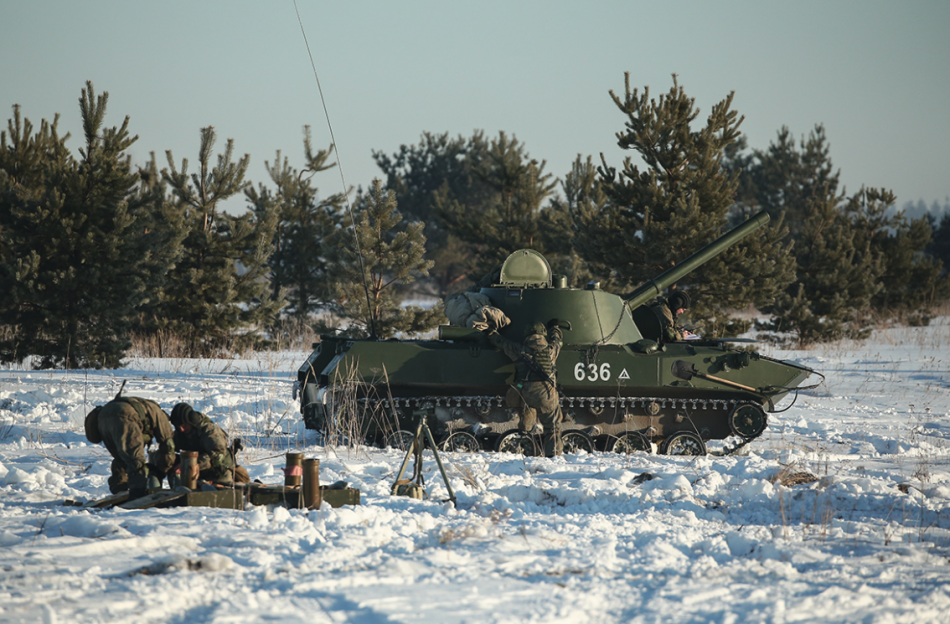
By Jim Naughton
Just when you thought it was safe to use or ignore my original treatise on Warsaw Pact artillery, BF introduced new toys. With the introduction of Red Dawn there are two new indirect fire systems – the 2S9 Nona self-propelled gun-mortar and the BM-37 82mm Mortar.
Previously NDNG has published three articles explaining Warsaw PACT artillery: TOS-UP Part 1, TOS-UP Part 2, and TOS-UP Part 3. I will draw a few insights from previous for comparison but I’m not going to repeat the information. Part I identified the artillery available in Team Yankee and gave the statistics. The next section furnishes data on the two new weapons.
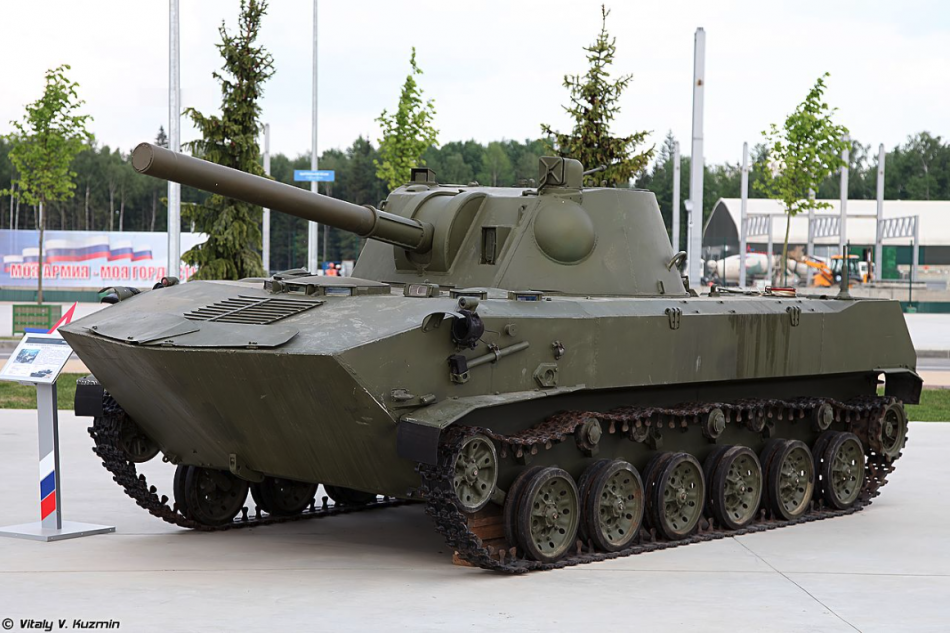
The 2S9 NONA (Noveysheye Orudiye Nazemnoy Artillerii or Newest Ordnance of the Ground Artillery) was introduced in 1981 to replace towed mortars in rapidly expanding Air Assault forces as well as the towed guns of the Air Assault Divisions. The NONA began showing up in Motor Rifle Regiments in the late 1980s as production continued. A variant was built into the BTR-80 and towed versions exist for mountain fighting, and for airmobile infantry units (which have little organic transport). Battlefront represents the 2S9 baseline, built into the BTR-D hull.
The BF model is sold separately from the generic BTR-D package (which features infantry carrier, BTR-ZD, and BTR-RD variants) and represents an essential component of a ‘pure’ VDV force. The NONA populates the niche in VDV units that would be filled by the 2S1 Carnation and is also available as a support choice in the same niche of the Support Section of the Force Diagram occupied by the Carnation.
The NONA brings Skill = 4 to the party, and working in tandem with the BMD-1 observer found in the Support Section, brings a NATO-like capability to the Soviet force. The BMD-1 observer option is enabled by the NONA as well as 2S3, BM-21, and BM-27 support artillery. Thanks to the ‘use the lower skill of observer or artillery’ rule, the extra skill of the BMD observer is only relevant to the NONA and the BM-37 mortars. But it does provide a +1 to range-in for any friendly battery on the table.
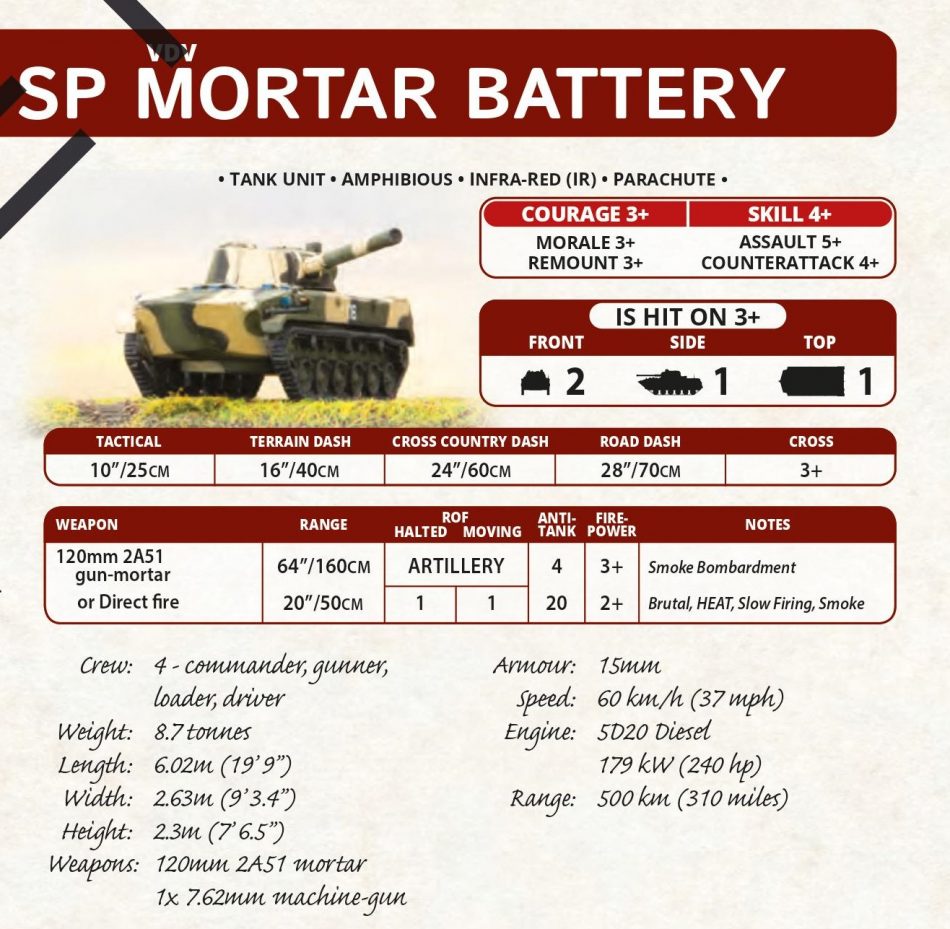
The chief weakness of the NONA is its 64″ range and a minor annoyance is the AP Cost. Currently the NONA costs 6 AP for a three-pack, like PACT artillery with a similar skill. Given that the NONA has 24″ less range than the Carnation, and its direct-fire HEAT capability is only AT=20, that feels a little high. On a 4×6 competition table, it won’t matter significantly, but playing on a 6×8 or larger, it does.
The other new entry in the artillery category is literally ground-breaking. The BM-37 82mm Mortar. BF has steadfastly resisted including dismounted infantry mortars in all TY units, along with towed artillery and antitank guns. This new team changes that trend, and I would expect BF to follow suit in future books depicting light infantry – even though the Air Assault units depicted in RED DAWN are mechanized.
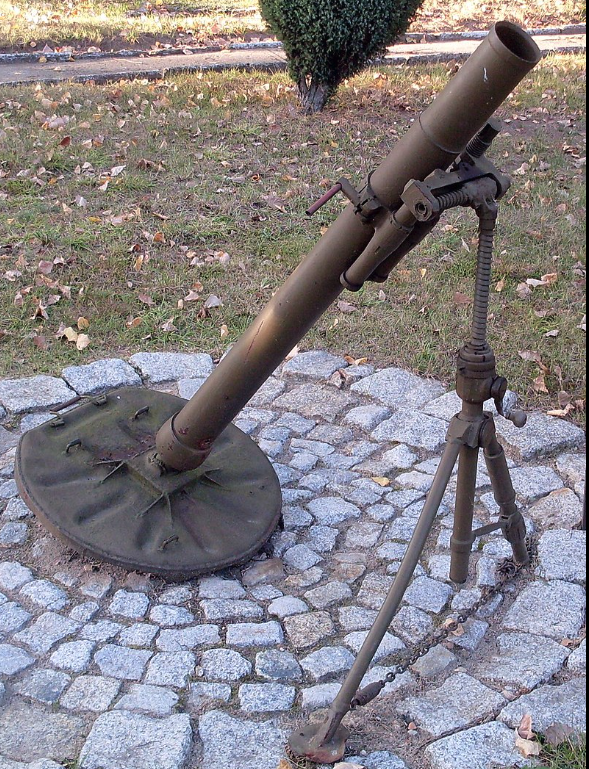
The BM-37 is literally a blast from the past. Introduced in 1937, it has remained current in the Soviet and Russian Army since then, doing yeoman’s service in World War Two and literally every intervention or brushfire war since. The Soviets updated it several times, with the BM-37M2 being in service alongside earlier models in the ’80s.
The Soviets were introducing the more expensive (and capable) 2B9 Vasilek automatic mortar in both motor rifle and air assault units, and of course ‘old reliable’ 120mm Sana mortar remained in service. Both mortars were used in Air Assault/Airmobile units, in much the same way as the BM-37. BF chose not to represent the more advanced Vasilek mortar or the heavier 120mm, although both systems were fired from modified GAZ 66 trucks, and the Vasilek was mounted on the MTLB by the end of the Cold War.
BM-37 is represented in two ways. First as battalion mortars in the VDV BMD battalion. Second as company mortars for the VDV BMD Afghansky company. Both units require the same models differing in Morale, Skill, and AP cost. The mortar unit in the VDV BMD battalion costs 2AP and its elite counterpart costs 5AP. The difference in price brings a change in HIT NUMBER(4+), SKILL(3+), and other ratings.
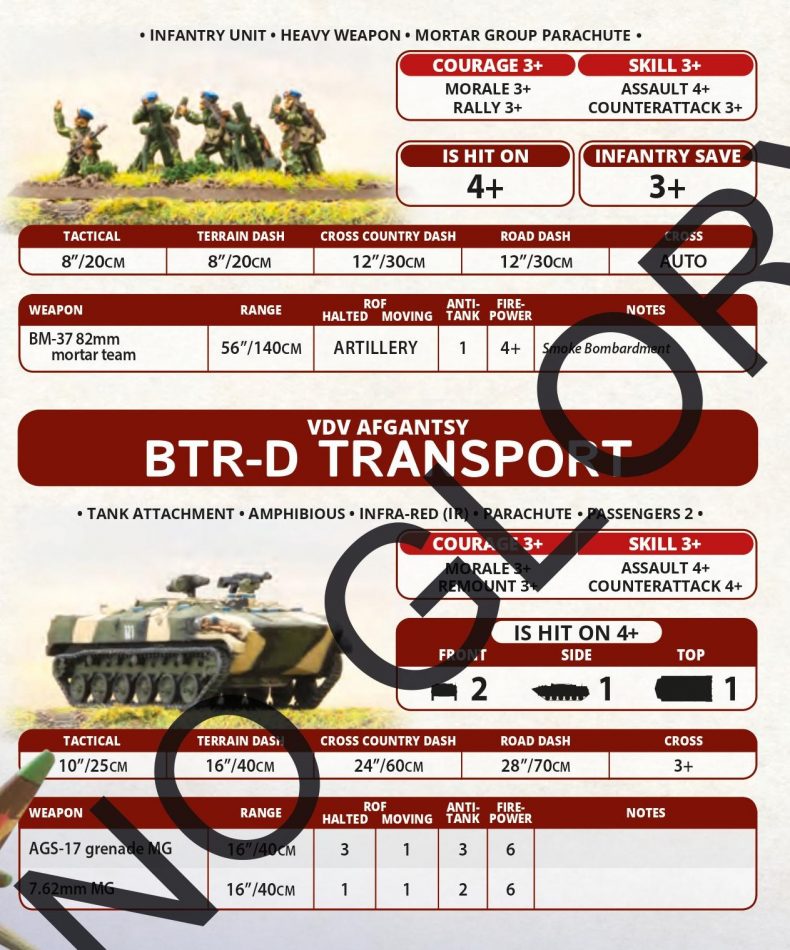
In both cases, the BM-37 unit consists of two infantry stands and two BTR-D vehicles as a transport detachment. The BTR-D vehicles provide some firepower to defend the mortars with their AGS-17 and MGs. The mortar teams have a special ability called MORTAR GROUP, allowing each team to count as two teams when firing. The BM-37 has negligible anti-tank capability (AP=1) but respectable firepower (FP=4+, the same as the BM-21), so it is a niche weapon for producing smokescreens and bombarding infantry. Table 1 summarizes the characteristics of these two new weapons.

The closest comparable to the NONA is the 2S1 Carnation, whose principle advantage is its 88″ maximum range. On a standard 4×6 TY table, this is only mildly important – in scenarios like NO RETREAT where the game is played attacking down the 6′ length of the table, the opposing corners are 86″ apart so you can’t trivially cover the entire table burying a NONA in the corner. Instead your geometrically optimum position is 12″ off your baseline on the centerline. Fighting across the 4′ dimension, the NONA needs to set up near the centerline but not right on it to cover the whole table.
BM-37 has no comparable PACT weapon in Team Yankee. Its stats are exactly the same as the 81mm mortars found in NATO’s FV432 self-propelled mortars and LAV-mortars.
TOS-UP Part II investigated the lethality of the artillery. The first step identified a statistic called Basic Lethality Index, or BLI. The BLI is a calculation of what happens to a target NATO stand/model found under the template during a repeat bombardment. Table 2 shows the result – the 2S1 (and hence NONA) has a BLI of .18 (P[K]=18%) against dug-in infantry. You can multiply the BLI of a template weapon by the targets under the template and estimate the number of dead models. Incidentally, the increased BLI for DANA compared to 2S3 reflects the autoloader.

The BLI for NONA and BM-37 are in Table 3 below. The NONA calculates the same as 2S1; the BM-37 works the same against infantry and unarmored tank teams as the BM-21 but is ineffective against actual armored vehicles.

The next step was accounting for the difference between Artillery Templates and Salvo Templates. As explained in TOS-UP Part II, I used ‘templating’ to estimate the part of two nasty NATO units that would be found under each template when defending an objective, and discovered that on average the Salvo Template covered twice as many targets. Leading to an Adjusted Lethality Index (ALI). However, this doesn’t apply to our two new systems. Their ALI is the same as the BLI. The final step in deciding what artillery is most effective is dividing the ALI by the cost of the 3-tube battery. I’ve integrated the new weapons into this chart.

I’ll point out some useful information. First, the basic BM-37 gives the greatest lethality per AP spent versus dug-in infantry of any ARTILLERY weapon. That’s not a surprise; the BM-21 with a similar performance is the winner in the SALVO Category. The Afghanski BM-37 is not as cost-effective in this mission simply because its cost is a reflection of Skill and Morale. The NONA is slightly less cost-effective in this situation than the Soviet 2S1 and equivalent to the East German and Polish 2S1, because its cost reflects only its skill, not its range.
The extra expense found in the BM-27, TOS, and DANA makes them slightly less desirable from a pure cost-effectiveness viewpoint. Two batteries of 2S1 or one battery of 2S1 and one of 2S3 yield more kills per point than a single 3-pack of TOS. That doesn’t even consider the direct fire capability or smoke capability lacking in TOS.
To evaluate the effect of higher skill (and higher cost), we must take our analysis one step further and look at the effect of skill on ranging-in. Bringing us the analysis found in TOS-UP Part III. Table 5 gives the probability of ranging-in as found in Part III. The only change created by these two new weapons is the 3+ line could be changed to ‘PACT/VDV only.’

These new VDV weapons have the same characteristics as PACT weapons and thus enjoy the benefit of being more likely to range in on the first attempt than any other attempt, particularly if using smokescreens first. This leads us to Table 6:

There isn’t a direct comparison for BM-37. But 2AP providing a responsive, lethal Artillery Template is pretty attractive. NONA is 40% more lethal than 2S1 when forced to range in. One AP buys a lot.
The other conclusions of Part III remain valid. Double-size batteries do not pay off. Better skill makes having two batteries more desirable. Even two different batteries.
The problem with the BM-37 is the luggage necessary to obtain it. It is only available in a Red Dawn VDV formation costing a minimum of 15 additional AP. If one of your formations is VDV, it’s a no-brainer. But until BF decides to include mortars in other motor rifle formations, it’s a niche weapon.
The 2S9 NONA is an excellent support choice for any Soviet force.
The perfect combination of Soviet artillery remains a TOS-UP, but my opponents will see NONA frequently.
